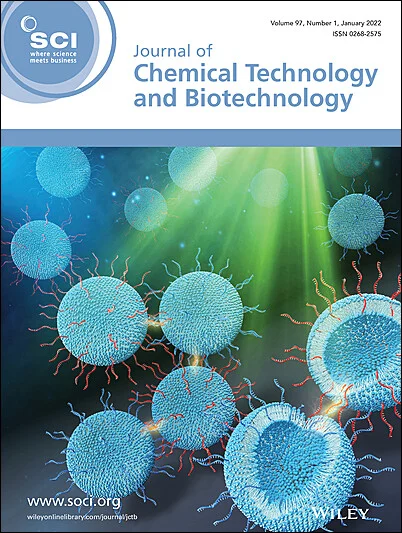求助PDF
{"title":"Potential of deep eutectic solvents as green and sustainable solvents for the recovery of carboxylic acids from aqueous solution: a review","authors":"Saurabh Babu, Sushil Kumar","doi":"10.1002/jctb.7880","DOIUrl":null,"url":null,"abstract":"<p>This paper presents an in-depth exploration of the potential of deep eutectic solvents (DESs) as green and sustainable solvents in the reactive extraction process for the recovery of carboxylic acids from fermentation broth/aqueous waste stream. It delves into the eco-friendly nature and cost-effectiveness of DESs, highlighting their high solvation capabilities and aligning with sustainable practices. The various hydrophobic DESs/NADESs, examining their suitability for the extraction of carboxylic acids as the replacements of conventional solvents along with their preparation, are explored. The study emphasizes the appropriate selection of hydrogen bond donors (HBDs) and hydrogen bond acceptors (HBAs) in DES formulations to enhance the extraction efficiency. The role of physical properties of DESs such as viscosity, density, surface tension and ionic conductivity, which impact the mass transfer efficiency in the extraction of acids are discussed. In this review, the effect of various process parameters such as type of DES/carboxylic acid, initial acid concentration, pH, DES to aqueous phase ratio, temperature, stirring speed on the extraction of carboxylic acid along with possible extraction mechanism are extracted out. With exploration of recent studies on the extraction of acids using DESs, the efficient recovery of carboxylic acids and the excellent reusability of the DES for multiple extraction cycles is also discussed. The paper concludes with recommendations for future prospects, emphasizing the need to optimize DES compositions and intensified reactive extraction technologies with scale up for practical and efficient carboxylic acid recovery. © 2025 Society of Chemical Industry (SCI).</p>","PeriodicalId":15335,"journal":{"name":"Journal of chemical technology and biotechnology","volume":"100 8","pages":"1541-1562"},"PeriodicalIF":2.4000,"publicationDate":"2025-04-28","publicationTypes":"Journal Article","fieldsOfStudy":null,"isOpenAccess":false,"openAccessPdf":"","citationCount":"0","resultStr":null,"platform":"Semanticscholar","paperid":null,"PeriodicalName":"Journal of chemical technology and biotechnology","FirstCategoryId":"5","ListUrlMain":"https://scijournals.onlinelibrary.wiley.com/doi/10.1002/jctb.7880","RegionNum":4,"RegionCategory":"生物学","ArticlePicture":[],"TitleCN":null,"AbstractTextCN":null,"PMCID":null,"EPubDate":"","PubModel":"","JCR":"Q3","JCRName":"BIOTECHNOLOGY & APPLIED MICROBIOLOGY","Score":null,"Total":0}
引用次数: 0
引用
批量引用
Abstract
This paper presents an in-depth exploration of the potential of deep eutectic solvents (DESs) as green and sustainable solvents in the reactive extraction process for the recovery of carboxylic acids from fermentation broth/aqueous waste stream. It delves into the eco-friendly nature and cost-effectiveness of DESs, highlighting their high solvation capabilities and aligning with sustainable practices. The various hydrophobic DESs/NADESs, examining their suitability for the extraction of carboxylic acids as the replacements of conventional solvents along with their preparation, are explored. The study emphasizes the appropriate selection of hydrogen bond donors (HBDs) and hydrogen bond acceptors (HBAs) in DES formulations to enhance the extraction efficiency. The role of physical properties of DESs such as viscosity, density, surface tension and ionic conductivity, which impact the mass transfer efficiency in the extraction of acids are discussed. In this review, the effect of various process parameters such as type of DES/carboxylic acid, initial acid concentration, pH, DES to aqueous phase ratio, temperature, stirring speed on the extraction of carboxylic acid along with possible extraction mechanism are extracted out. With exploration of recent studies on the extraction of acids using DESs, the efficient recovery of carboxylic acids and the excellent reusability of the DES for multiple extraction cycles is also discussed. The paper concludes with recommendations for future prospects, emphasizing the need to optimize DES compositions and intensified reactive extraction technologies with scale up for practical and efficient carboxylic acid recovery. © 2025 Society of Chemical Industry (SCI).
深共晶溶剂作为绿色可持续溶剂从水溶液中回收羧酸的潜力综述
本文深入探讨了深层共晶溶剂(DESs)作为绿色可持续溶剂在活性萃取工艺中从发酵液/废液中回收羧酸的潜力。它深入研究了DESs的环保性质和成本效益,突出了它们的高溶剂化能力,并与可持续实践保持一致。探讨了各种疏水DESs/NADESs,考察了它们作为传统溶剂的替代品提取羧酸的适用性及其制备方法。本研究强调在DES配方中适当选择氢键给体(HBDs)和氢键受体(HBAs)以提高萃取效率。讨论了DESs的粘度、密度、表面张力和离子电导率等物理性质对萃取酸的传质效率的影响。考察了DES/羧酸类型、初始酸浓度、pH、DES与水相比、温度、搅拌速度等工艺参数对羧酸提取的影响,并探讨了可能的提取机理。对近年来利用DES萃取酸类的研究进行了综述,并讨论了其对羧酸的高效回收以及在多次萃取循环中具有良好的可重复使用性。最后,对未来的发展前景提出了建议,强调需要优化DES的组成和强化反应萃取技术,以实现实用和高效的羧酸回收。©2025化学工业学会(SCI)。
本文章由计算机程序翻译,如有差异,请以英文原文为准。




 求助内容:
求助内容: 应助结果提醒方式:
应助结果提醒方式:


